As a huge fan of single ply yarns, I cannot accept the popular opinion, that they are quite problematic or impractical. Whenever such yarn appears in a discussion, one word assaults me from everywhere. The word which petrifies knitters, makes their blood run cold and immediately disqualifies a 1ply yarn as an object of desire. And this word is… Pilling! I believe this is an absolutely unfair summary of this extremely charming, delicate and beautiful thread and today I would like to present you my point of view, point out not only its disadvantages, but also plenty of advantages that are mentioned far too rarely. And most importantly, to share with you my foolproof way to work with it – a “secret” that will prevent disappointment and give your knitwear garments long life and beautiful look.
For those who are unfamiliar with the term, here is a short explanation of what single ply actually means. If you look closely at the yarns you have in your stash, you will see that they are made from different number of thin threads. 1ply means that a yarn is made of just one thread (similarly 2ply of two, 3ply of three and so on). In general, the more threads, the more resistant and elastic the yarn is – although it does not depend solely on the number of threads, but also on the fibre or the way it is twisted. This topic is very extensive and interesting on its own (definitely worths a few separate posts), but let me quickly return to our main subject and focus on this “lonely” thread and its features.
After many years of working with 1ply yarns and wearing sweaters or accessories made from them regularly, I can confidently say that their advantages far outweigh their few disadvantages (which basically all other yarns have as well). So I created a detailed characteristic covering its various aspects for you. It is, of course, subjective, because it sums up my own experiences and many years of observation. As I mainly knit with 1ply yarn in fingering weight, the following description applies exactly to this kind of yarn.
Single ply yarn features
This yarn is soft and gentle to the skin. Regardless of the fibre composition single thread is simply delightful! The skein is fluffy and chubby and the final product made from it feels like a cloud in the sky. The fluffiness of 1ply yarn should not be associated with mohair-like hair. The thread is surrounded by a very short fuzz, forming a halo – easiest to notice it against the light. The fuzz is an integral part of this yarn and should not be confused with pilling.
An incredibly interesting feature of such yarn is its lightness! It is full of air and thanks to this knitwear made from a single ply yarn is flowy and easy to wear or store – it does not take much space in the wardrobe (you can even easily put it in your bag when it becomes too warm for a sweater during a walk). Moreover it will not overwhelm your spring or summer outfits and dries in the blink of an eye after washing. And thanks to its lightness is extremely efficient – you can create a small sweater for a dress using a really small yardage.
What it fits
Single ply yarn produces pleasantly round and plump stitches making it a perfect choice for all lace and textured stitch patterns. As its smooth surface does not have any texture, nothing distracts attention from detailed patterns. It is also reliable when paired with a stockinette stitch, highlighting every stitch and giving the fabric a cosy look.
Because of its low elasticity, cables will turn out flat and less spongy then when made of yarns twisted from many threads. This is why I rarely choose it for such projects.
However, it does not mean that it is completely inflexible. Knitwear made of it is not stiff, on the contrary – it can easily be stretched, but over time may have a problem returning to its original shape.
1ply yarn is less resistant to abrasion, so it is not the best choice for knitting socks, which are in constant contact with our body, ground and shoes.
But even a small addition of another fibre (silk or nylon) is enough to make it stronger – such thread is durable and cannot be broken easily with your hands.
How it behaves in finished clothes
1ply yarn blocks very well and keeps the shape for a long time after washing, but due to its lack of elasticity if stitches are very uneven (some too tight, others too loose) blocking will not provide effective alignment.
I really like the ease with which you can fix snagged sweaters made of 1ply yarns. With multi-threaded yarns there is a significant risk of pulling only some of the threads – repair of such damage can sometimes be problematic and give unsatisfying results. In case of single thread, we just have to pull the thread to the right place.
And finally, pilling. Yes, it is true – single ply yarns pill, but hello! I have plenty of sweaters in my wardrobe, made of various types of yarns, and they pill as well. Wool is wool – whether we like it or not, it pills.
To prove it, I took four random sweaters out of my wardrobe. Two of them are made from pure single ply wool and have been with me for many years. This is how they look in vulnerable areas before shaving:
The other two are made from 2ply yarns – a mix of alpaca, silk and cashmere and 100% merino wool. The level of pilling is the same, and in some places even higher than on single ply sweaters. Of course I do not wear all sweaters with the same intensity, but this is just an example that 1ply does not stand out from other types of yarn.
What undoubtedly distinguishes single ply is the dignity it shows when approached by wool shaver. Yes, it does pill, but as soon as we shave it, it will be fresh and new again and will not lose any of its original charm. Honestly!
Additional note
Some yarns can positively surprise by their pilling resistance. However, this high resistance often has side effects, as harshness, cord-like feel or lack of gloss.
Recipe for single ply yarn
As long as a sweater made from 1ply yarn is not pilling more than the others, everything is quite normal. The way the sweater is pilling is also greatly important. If we are finding dense balls of fluff, which can be easily detached, it is a normal and natural process of fabric use and we there is nothing to worry about.
Nevertheless, if we notice excessive pilling that occurs after the first wash or even while knitting, then something is definitely not right! In all likelihood our wool cannot “breath”! This situation is clearly a result of choosing wrong needle size, which does not provide enough space between stitches. And for single ply yarn it is absolutely crucial!
Note!

Single ply yarn due to its lack of elasticity may look thinner than multi ply one. Especially while knitting, when taut thread turns into stitches we can get the impression that our fabric is very thin. Its is a trap!
You should know that single ply yarn swells after washing (and even before – just put your knitting project aside for a while to see the difference) and if we do not provide room for it, the chance of pilling will increase significantly. In such situation, stitches surrounded by fluff begin to touch and intensively rub against each other. In extreme cases, such fabric may even become felted.
How to deal with it? Always choose needles one size bigger than for 3ply or 4ply yarns. All of us knit a bit differently, depending on the method used and thread tension, so I cannot give you the perfect needles size, but I can give you an example.
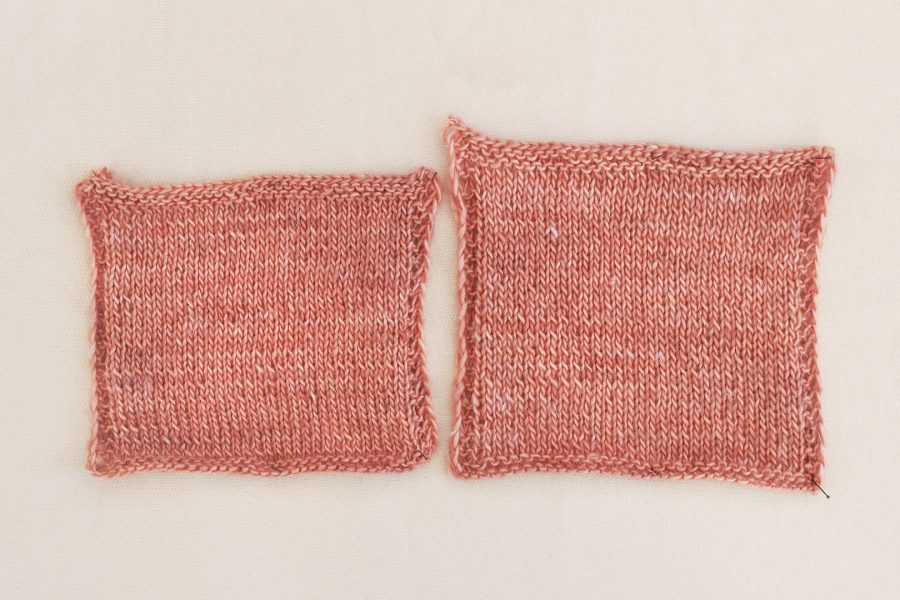
Although the samples have noticeably different size, it may seem at the first glance that the stitches, in terms of quality, look quite similar on both swatches. And this is why it is so easy to make a mistake in choosing the right size of the the needles. It is much easier to notice it in person than in the picture, especially when we can use our fingers to judge. Look at the samples again, this time closer:
The swatch made on smaller needles looks just perfect – it is aesthetic, stitches are even, edges made in garter stitch are tight and create a nice rim. The swatch made on 3.75 mm needles is flowy and has bigger gaps between not so even stitches – they are a bit lopsided and sloppy. You can feel it easily using your fingers. But this is how the correct swatch made from single ply yarn should look like! These spaces and unevenness mean that we provided our wool with space to fill.
Additional note

Use mainly your sense of touch to judge the quality of your swatch. Stretch the sample in all directions and make sure it is easy to handle. Even unstretched fabric should be slightly translucent and gives the impression of being “too loose”. But remember that “too loose” does not mean “very loose”. Make few samples to find your perfect needle size for single ply yarn and remember it for future reference.
And now it is time to show you the washed and blocked swatches! I washed them in the same way: in cold water, using a little wool wash detergent, giving them the desire shape and letting them dry completely.
The sample made on 3.75 mm needles (on the right) has evened out nicely and gently filled the spaces between stitches already. The sample made on 3.25 mm needles has also improved after washing – the stitches are more even then before, but already started to touch. It is not as flowy as the sample made on larger needles and gives the impression of being stiff.
Additional note

You have to be aware that single ply yarns may be very different from each other. Tighter twisted threads or blends with silk or nylon have smaller fluff and higher durability. They seem more “dense” and not as susceptible to fluffing or pilling as lightly twisted yarns. Such threads need more time to gain volume. So if you want a piece of garment which looks phenomenal for more then few months, you still have to remember this golden rule. Space above all!
I am pretty aware that I am describing nuances difficult to notice at the first glance, so I will use reliable numbers to help you make the right decision!
I believe that is is extremely important to achieve a gauge in range of 21 to 23 stitches per 10 cm while working with pure wool single ply fingering weigh yarn, which does not have strong twist. Such “loose” wool thread is characterized by unevenness, distinct fuzz and is easy to break with hands. My Majula sweater is made from such wool – I used Milis from Julie Asselin and 3.75 mm needles and my gauge was 21 stitches per 10 centimetres. Majula is still in my wardrobe and feels excellent! There are still many years together ahead of us.
In case of strongly twisted wool and blends with silk or nylon, the ideal gauge is between 22 and 25 stitches per 10 centimetres. Such yarn looks smooth and even in a skein. Undoubtedly, it will loosen up in the finished project and wrap itself with delicate fluff, but stitches will not be as chubby as in loosely twisted yarn. This way we can afford a bit more stitches per 10 centimetres.
I made Posy sweater using Merino Singles from Positive Ease – this yarn is exceptionally even and highly twisted. Flora sweater was made from merino and silk blend which reduced fluffiness and improved thread’s durability. I reached gauge 25 stitches for Posy sweater and 24 stitches for Flora.
If I had reached the same sample for the Majula sweater, undoubtedly it would have been a disaster.
Summary
Taking into account all the advantages of 1ply yarn, I believe it should not be disregarded too hastily – some of its features cannot be matched by any other yarn! It does require a bit more understanding and proper approach, but in my opinion it is not a high price to pay for beautifully highlighted lace patterns, three-dimensional colours and unbelievable softness and lightness. Please give it a chance! Just remember the golden rule: if your swatch looks too perfect before washing, you have to use bigger needles! Do not be tempted by her charm and beauty and bet on more space. You will not regret that decision!
Marzena


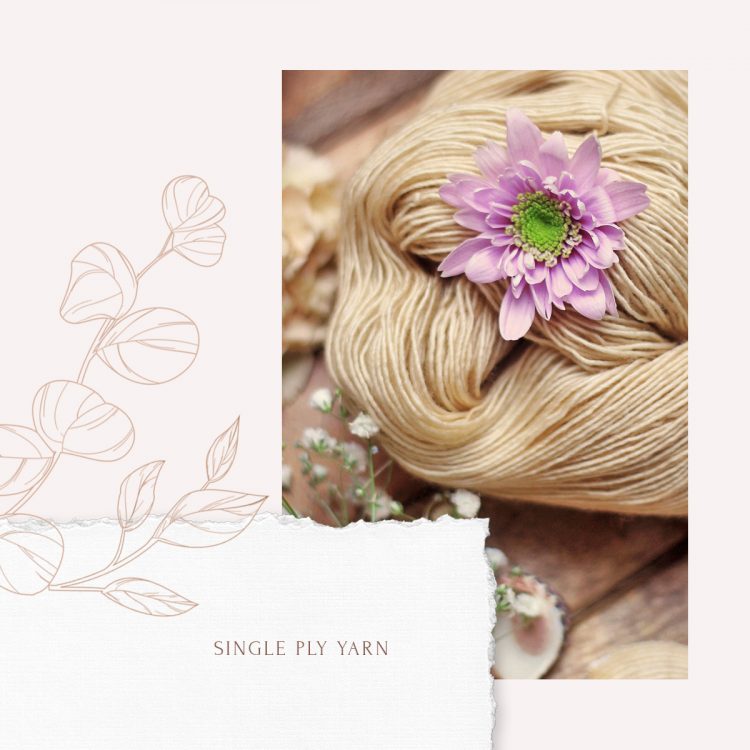
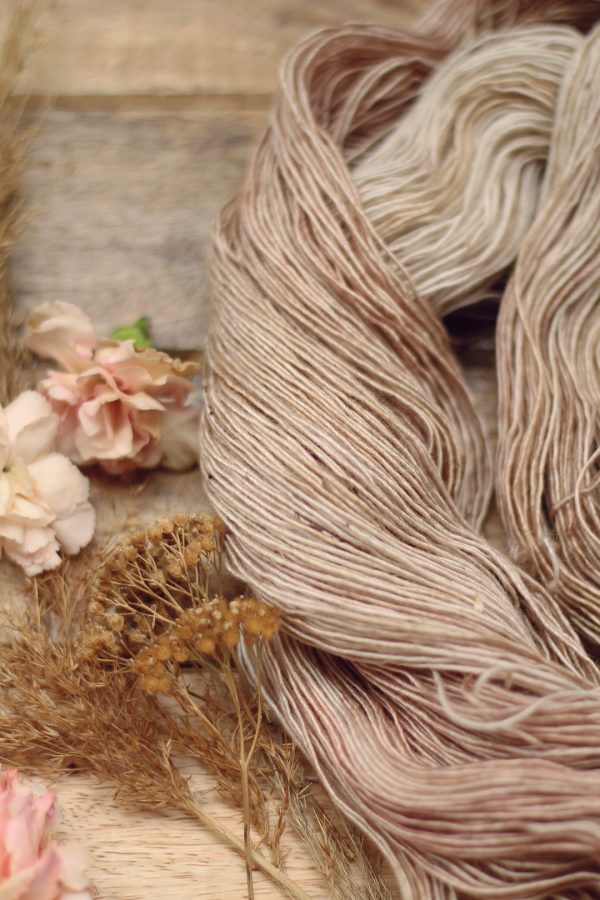






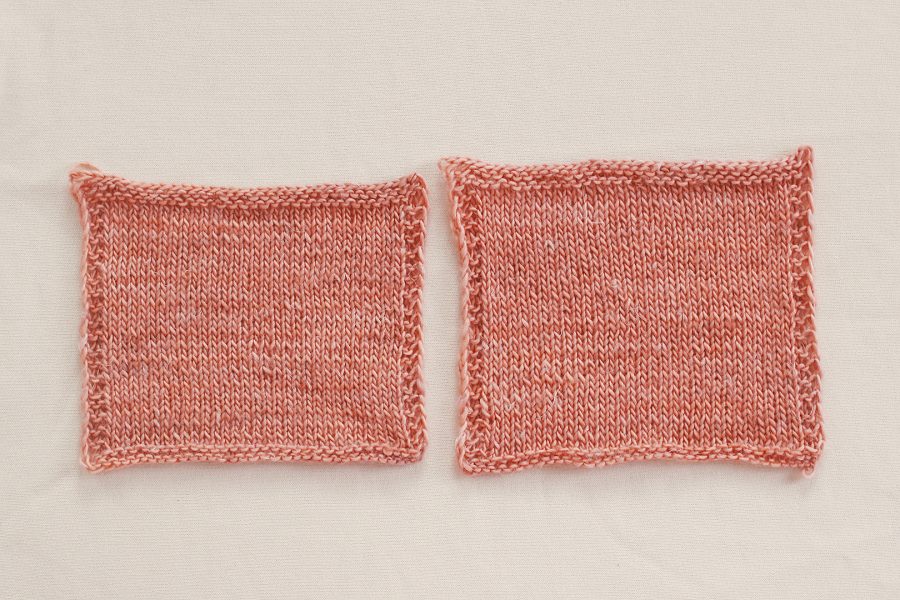






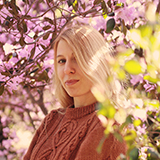

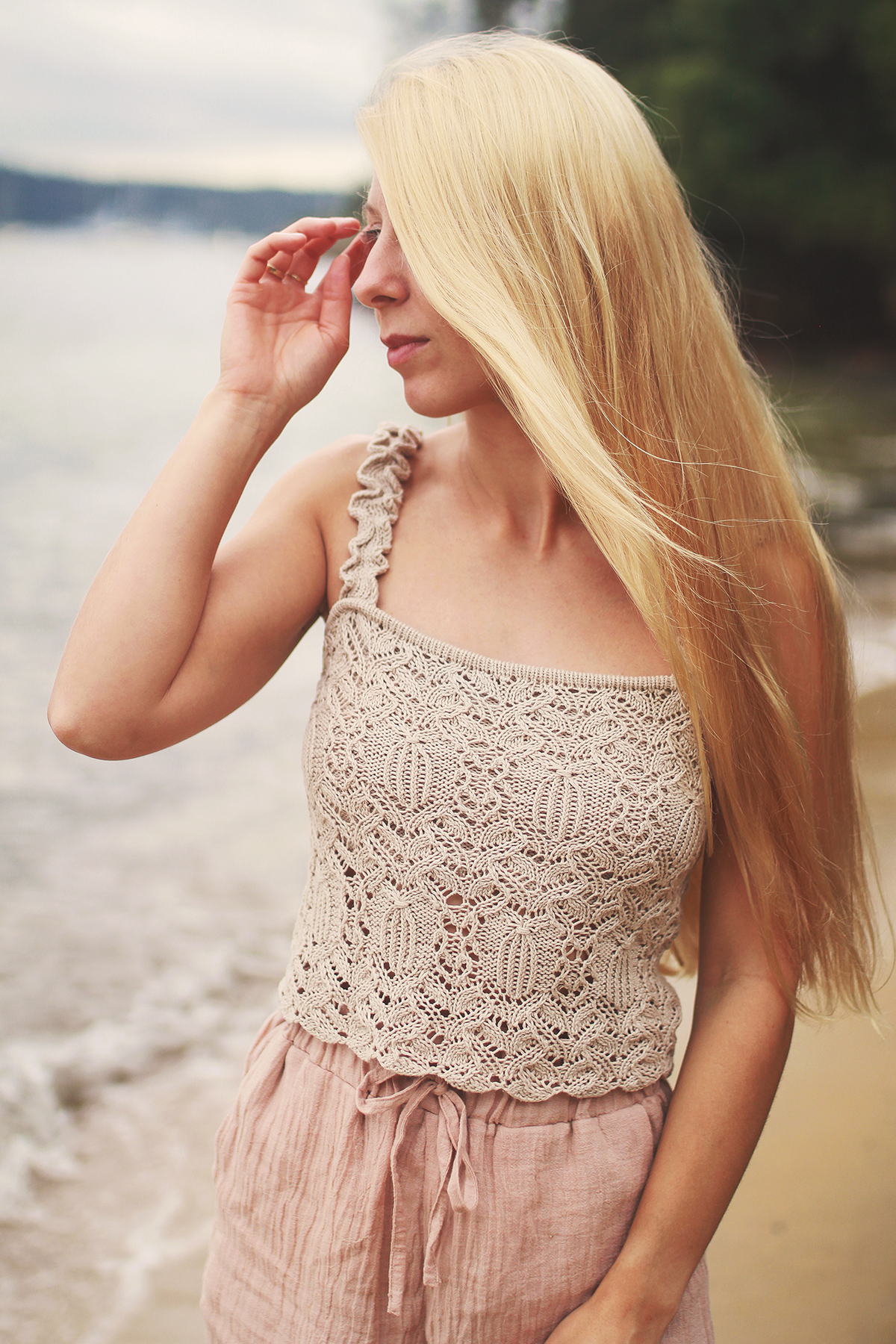
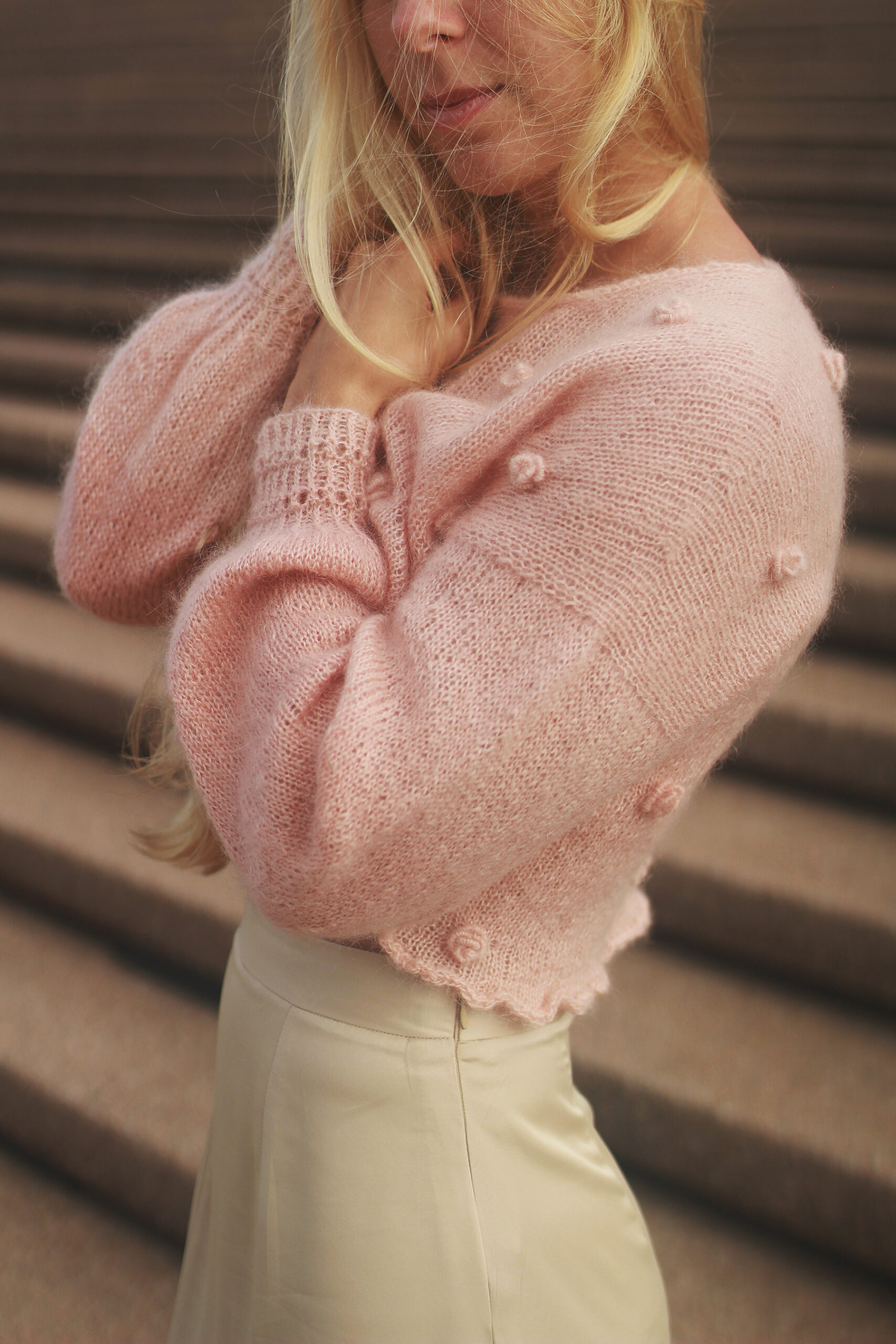
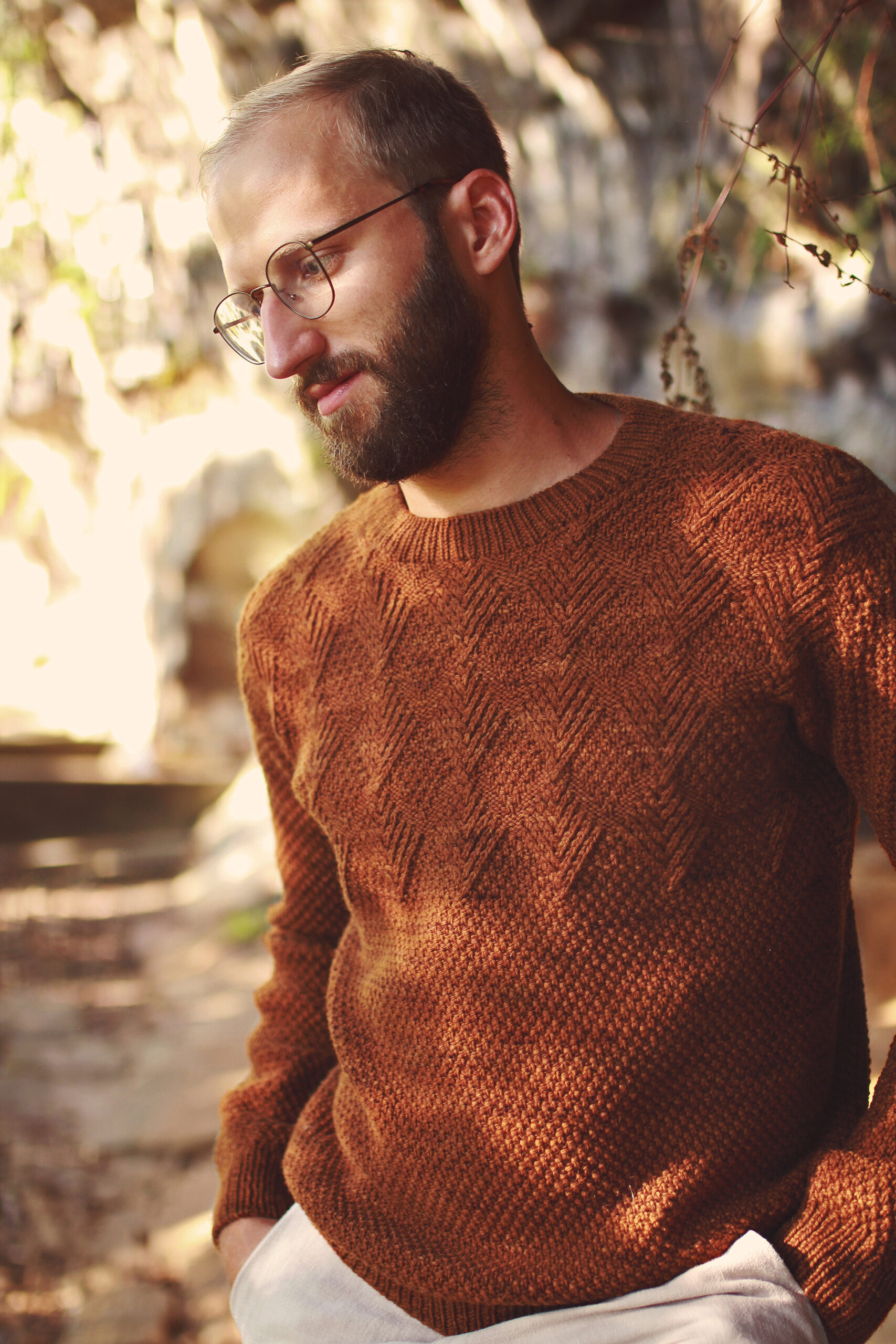
Sylwia Strzelczyk
Thank you Marzena. It is thanks to you that I reach for single yarns with such a great pleasure, and thanks to your tips I will also remember to provide the knitted fabric with the right space.
Marsha
Would you advise knitting with hand spun single ply from Qiviut finger roving for a heavier weight yarn.
I want to make a very warm outside sweater. I hand combed the Qiviut off a muscox hide and had it put into finger roving and will spin my self. I have minimal spinning experience but have knitted alot, your thoughts would be appreciated.
Marsha
marzenakolaczek
Hello Marsha!
I have never worked with this yarn, but I believe it is not a bad idea! 🙂 Make sure that the thread is twisted properly and you use a larger needles to provide the space for fluff. I made a sweater using a Aran weight single ply yarn (Rosemary sweater) and I am really satisfied.
Carole Knight
I found this helpful but I cannot find a pattern anywhere for
SW merino – 400 Yds
I would appreciate suggestions as bought the yarn for the colours!
marzenakolaczek
Hi Carole! Does this yarn has 400 yds for 100 grams? If so, here is almost 200 000 pattern for such weight: https://www.ravelry.com/patterns/search#weight=fingering&sort=best&view=captioned_thumbs
I also have a few designs that ask for such weight, for instance Posy: https://marzenakolaczek.com/posy/
Lea: https://marzenakolaczek.com/lea/
Cosy Wifey: https://marzenakolaczek.com/cosy-wifey/
Lauren Lambkin
Hello,
Thank you very much for writing this post! I absolutely love single ply yarn but I was worried about working with it because everyone said it was so fragile. I wanted to ask if you knew of any resources for crochet sweaters that would suit single ply yarn? I adore your patterns but unfortunately I’m not that good at knitting yet. And thank you again for the advice!